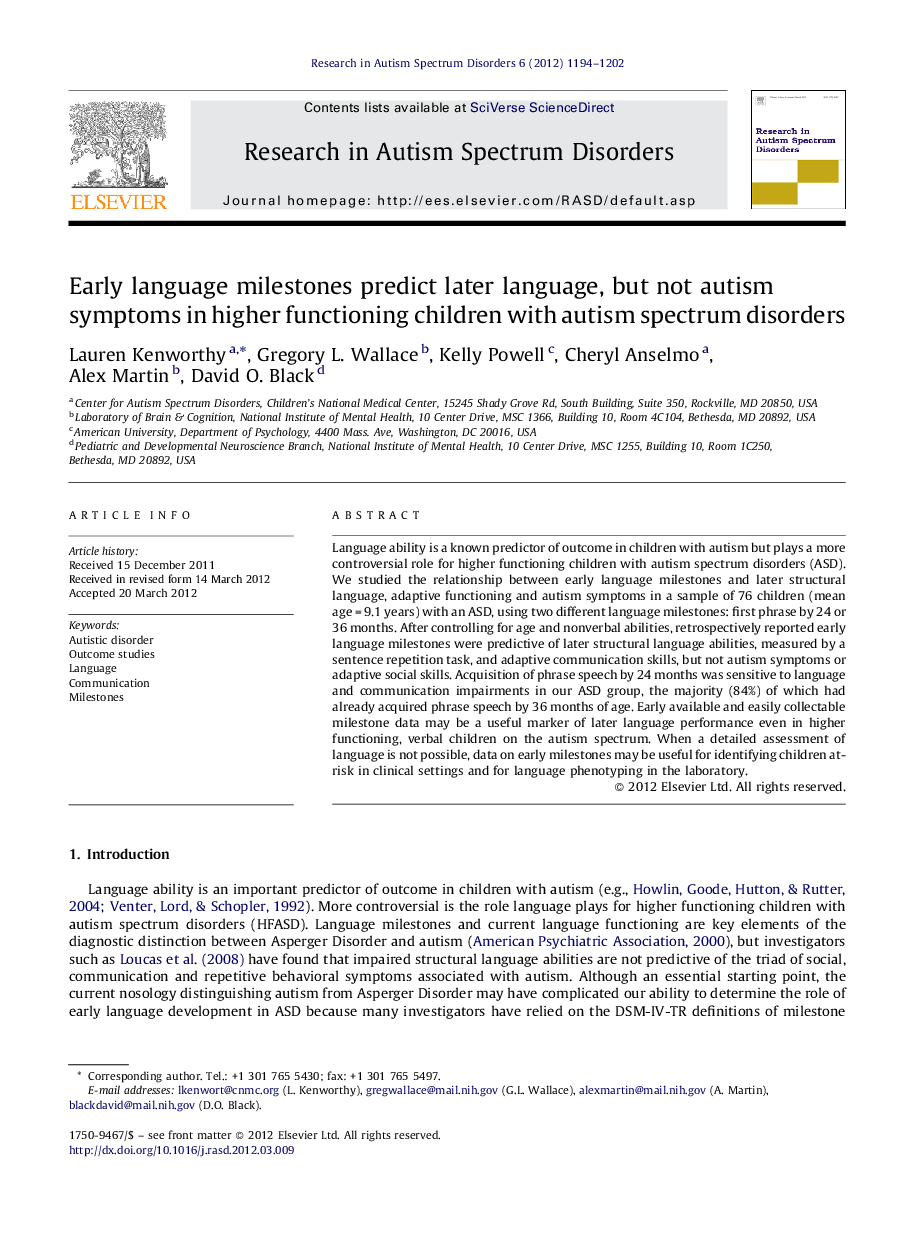| Article ID | Journal | Published Year | Pages | File Type |
|---|---|---|---|---|
| 370634 | Research in Autism Spectrum Disorders | 2012 | 9 Pages |
Language ability is a known predictor of outcome in children with autism but plays a more controversial role for higher functioning children with autism spectrum disorders (ASD). We studied the relationship between early language milestones and later structural language, adaptive functioning and autism symptoms in a sample of 76 children (mean age = 9.1 years) with an ASD, using two different language milestones: first phrase by 24 or 36 months. After controlling for age and nonverbal abilities, retrospectively reported early language milestones were predictive of later structural language abilities, measured by a sentence repetition task, and adaptive communication skills, but not autism symptoms or adaptive social skills. Acquisition of phrase speech by 24 months was sensitive to language and communication impairments in our ASD group, the majority (84%) of which had already acquired phrase speech by 36 months of age. Early available and easily collectable milestone data may be a useful marker of later language performance even in higher functioning, verbal children on the autism spectrum. When a detailed assessment of language is not possible, data on early milestones may be useful for identifying children at-risk in clinical settings and for language phenotyping in the laboratory.
► On-time language milestones predict communication outcomes at school age in HF-ASD. ► On-time language milestones predict sentence repetition abilities at school age in HF-ASD. ► Delayed language milestones identify an HF-ASD subgroup at risk for structural language impairment. ► Early milestones data can inform treatment planning and language phenotyping in ASD.
